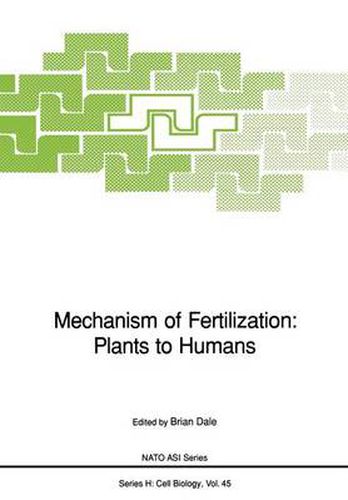Readings Newsletter
Become a Readings Member to make your shopping experience even easier.
Sign in or sign up for free!
You’re not far away from qualifying for FREE standard shipping within Australia
You’ve qualified for FREE standard shipping within Australia
The cart is loading…






This title is printed to order. This book may have been self-published. If so, we cannot guarantee the quality of the content. In the main most books will have gone through the editing process however some may not. We therefore suggest that you be aware of this before ordering this book. If in doubt check either the author or publisher’s details as we are unable to accept any returns unless they are faulty. Please contact us if you have any questions.
The majority of scientists interested in fertilization and early developmental processes will undoubtably have encountered the works of Alberto Monroy at some time in their careers. Alberto’s contribution to this field spans oogenesis to embryogenesis, where he used physiological, biochemical and morphological tools to answer a number of basic problems in cell biology. This multi-disciplinary approach, together with his remarkable intellectual flexibility and humour has had an enormous impact on this field and all those fortunate enough to have worked with him. The chapters in this book have been divided into four sections. The initial presentations revolve around late events of gameteogenesis, that lead to a physiologically mature gamete. Probably the most exciting area for research at the moment is the identification of the cytoplasmic mechanisms responsible for the meiotic arrest of oocytes and the factors responsible for initiating their maturation (Chapters 3 and 4). Less is known about the physiological changes in the male gamete in preparation for fertilization and this may be identified as a major area for future research. Although comparable data for the plant kingdom is presently restricted to studies on marine algae, new techniques for isolating angiosperm gametes (Chapters 1 and 17) promise rapid advances in this field. The second section looks at the events and molecules involved in gamete recognition, binding and fusion. One of the most controversial topics is when does sperm-egg fusion actually occur (Chapter 14).
$9.00 standard shipping within Australia
FREE standard shipping within Australia for orders over $100.00
Express & International shipping calculated at checkout
This title is printed to order. This book may have been self-published. If so, we cannot guarantee the quality of the content. In the main most books will have gone through the editing process however some may not. We therefore suggest that you be aware of this before ordering this book. If in doubt check either the author or publisher’s details as we are unable to accept any returns unless they are faulty. Please contact us if you have any questions.
The majority of scientists interested in fertilization and early developmental processes will undoubtably have encountered the works of Alberto Monroy at some time in their careers. Alberto’s contribution to this field spans oogenesis to embryogenesis, where he used physiological, biochemical and morphological tools to answer a number of basic problems in cell biology. This multi-disciplinary approach, together with his remarkable intellectual flexibility and humour has had an enormous impact on this field and all those fortunate enough to have worked with him. The chapters in this book have been divided into four sections. The initial presentations revolve around late events of gameteogenesis, that lead to a physiologically mature gamete. Probably the most exciting area for research at the moment is the identification of the cytoplasmic mechanisms responsible for the meiotic arrest of oocytes and the factors responsible for initiating their maturation (Chapters 3 and 4). Less is known about the physiological changes in the male gamete in preparation for fertilization and this may be identified as a major area for future research. Although comparable data for the plant kingdom is presently restricted to studies on marine algae, new techniques for isolating angiosperm gametes (Chapters 1 and 17) promise rapid advances in this field. The second section looks at the events and molecules involved in gamete recognition, binding and fusion. One of the most controversial topics is when does sperm-egg fusion actually occur (Chapter 14).